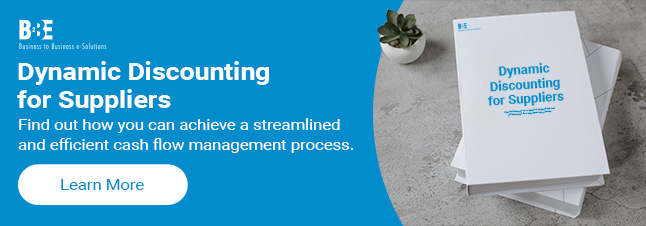The cash flow statement is a critical financial document that showcases the inflow and outflow of cash within an organisation. It’s consists of three sections: operating activities, investing activities, and financing activities. While it offers a comprehensive view of a company’s financial health, it also reveals essential details about financial costs incurred.
Finance Costs: A Crucial Component Of A Cash Flow Statement
Finance costs are expenses that arise from borrowing funds or financing obligations. These costs include interest payments on loans, bank overdrafts, or other borrowings. When crafting a cash flow statement, it’s vital to account for these expenses accurately.
Which is where a Dynamic Discounting solution would be important for businesses of all sizes. This innovative approach has been gaining traction across industries as a game-changer in managing finance costs effectively. Dynamic Discounting involves offering suppliers the option to receive early payments in exchange for a discount, optimising cash flow for both parties involved.
Impact on Cash Flow Statements
Incorporating Dynamic Discounting into the cash flow statement can lead to significant improvements. For companies leveraging this solution, the reduction in finance costs becomes evident in the operating activities section. Early payment discounts obtained through Dynamic Discounting can positively impact cash flows from operating activities, enhancing liquidity and overall financial health.
Reporting Finance Costs in Cash Flow Statements
When detailing finance costs in the cash flow statement, they are typically recorded within the financing activities section. This section reflects cash flows related to the company’s capital structure, including borrowing, repayment of debt, and interest payments.
However, with the integration of Dynamic Discounting, a portion of finance costs may also reflect in the operating activities section. The early payment discounts gained or the reduced finance costs resulting from this strategy alter the traditional narrative of finance costs solely appearing in the financing activities segment.
总结
The cash flow statement is a window into a company’s financial workings. Finance costs, although traditionally associated with financing activities, can see a shift due to innovative solutions like Dynamic Discounting. Embracing such strategies not only influences the bottom line but also alters how finance costs are portrayed within the cash flow statement.
Understanding the intricacies of finance costs is pivotal for a comprehensive analysis of a company’s financial performance. Dynamic Discounting emerges as a solution not just for cost reduction but also as a transformative force reshaping financial reporting.
Incorporating this progressive approach can redefine the outlook on finance costs within the cash flow statement, making it a dynamic and evolving document that reflects the company’s adaptability to modern financial strategies.
Learn more about B2BE’s 买方动态折扣 和 供应商动态折扣 solution.
关于B2BE
B2BE在全球范围内提供电子供应链解决方案,帮助企业更好地管理其供应链流程,提供更高的可视性、可审计性和控制性。我們以對工作的熱情為動力,以創新為靈感,以豐富的知識為依托。B2BE团队拥有20多年的经验,在世界各地开展工作。
欲了解更多信息,请访问 www.b2be.com.


